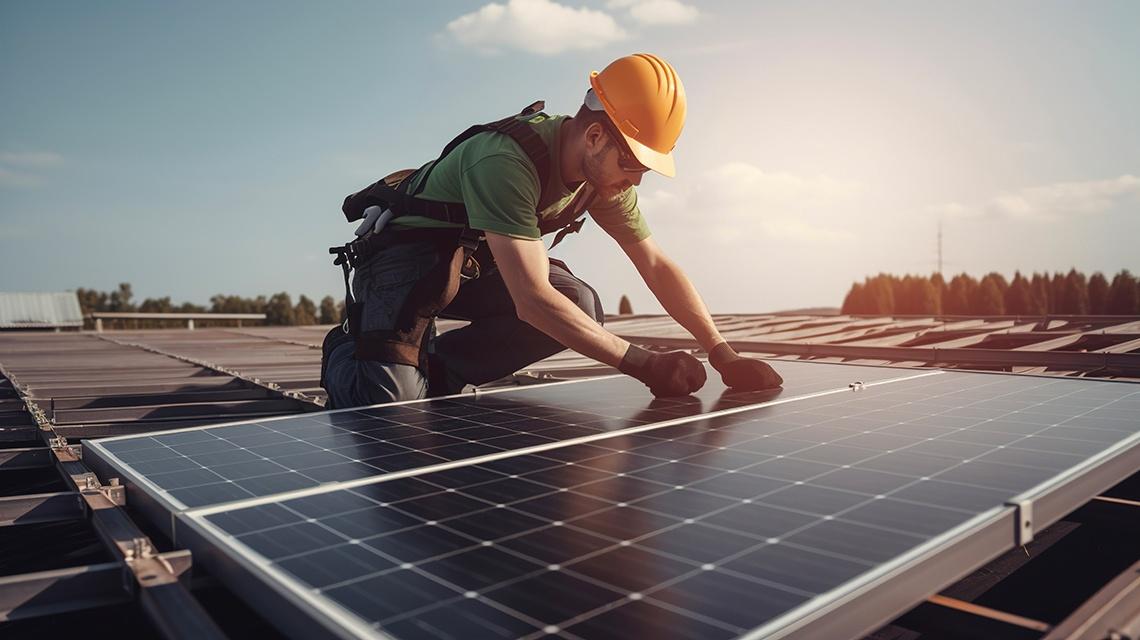Italian National Agency for New Technologies, Energy and Sustainable Economic Development

Energy: Italy, photovoltaics systems installed on 30% rooftops could meet residential sector’s entire electricity needs
The entire electricity demand of the national residential sector could be satisfied with photovoltaic panels installed on approximately 30% of the total roof surface area of residential buildings in our country, equivalent to almost the entire eligible rooftop area, as estimated by ENEA in the study published in the open access journal Energies which describes the actual potential of photovoltaics in Italy in 2030 and 2050 using just the roof area of existing buildings, without consuming further land.
"In our country there are over 12 million residential buildings with a total roof area of approximately 1,490 km2, of which only 450 km2, equal to approximately 30%, could be eligible for the installation of photovoltaic panels", explained Nicolandrea Calabrese, head of the ENEA Laboratory of Energy Efficiency in Buildings and Urban Development and co-author of the study with Domenico Palladino, researcher in the same laboratory.
The study highlights how this roof surface area (about 450 km2) could generate over 79,000 GWh of electricity for a total installed power of 72 GW. Even using a smaller area (approximately around 310 km2), the power generated could satisfy the electricity needs of the residential sector, equal to an average annual consumption of around 65.5 thousand GWh.
However, the most likely scenarios predicted by the ENEA study demonstrate that the installed photovoltaic power could only be 6 GW - 11.5% of the national target, set at 52 GW of photovoltaic capacity by 2030 (twice and a half the power recorded in 2020). By 2050, the study estimates that electricity generated from photovoltaics could potentially cover just under 40% of domestic needs, but with significant differences regionally: Veneto, Emilia-Romagna and Lombardy should get near the national targets even by following more precautionary measures, while other regions would need more stringent scenarios.
“To promote rooftops photovoltaics, incentives need to be modified or new actions implemented regionally. This is why we have defined a new index[1] to measure the photovoltaic potential of each region, which could support political decision-makers and local authorities in adopting increasingly effective and specific energy strategies for each territory”, pointed out Domenico Palladino.
At the territorial level, the ENEA study calculated that by 2050 in the North-West[2] over 5,500 GWh of electricity could be produced by photovoltaics on roofs, meeting up to 50% of residential needs. In the North-East[3] this percentage could exceed 50%, with a total production of 7,100 GWh. In the Centre[4], the percentage would drop to around 40%, while in the South and in the Islands would decline to lower percentages.
Despite the technical and economic potential of photovoltaics on rooftops, some issues have to be addressed like the intermittent nature of the solar resource and complex administrative procedures, although legislation has recently been passed to reduce bureaucracy and promote new installations on existing buildings, including those in historic centres. “In recent years, many energy efficiency measures have been implemented in our building stock, but much remains to be done: residential buildings still account for 12% of emissions and 30% of our country's overall energy needs, mainly due to air conditioning and a poor thermal performance of the building envelope”, concluded the two ENEA researchers.
Notes
[1] Regional potential index (RPI) is the ratio between the installed photovoltaic power and the theoretical maximum which could be installed on the calculated optimal roof area (approximately 450 km2 nationally). This index was calculated for three reference years (2021, 2030 and 2050).
[2] Valle d'Aosta, Piedmont, Liguria and Lombardy.
[3] Trentino, Friuli-Venezia Giulia, Veneto and Emilia-Romagna.
